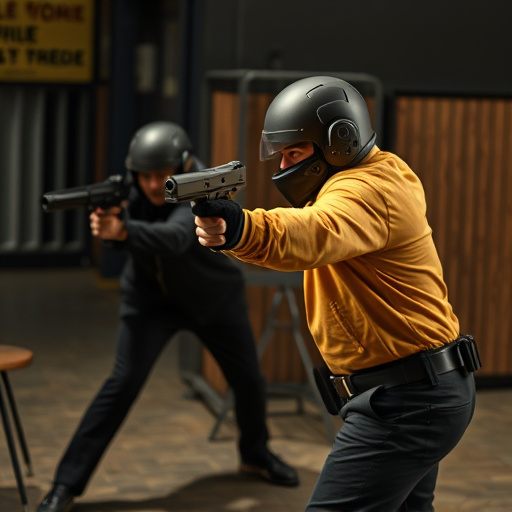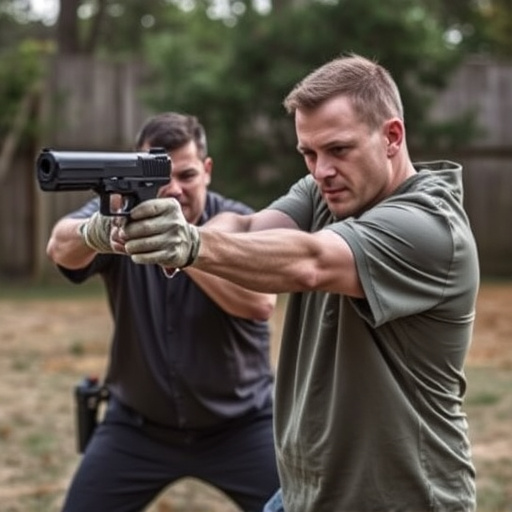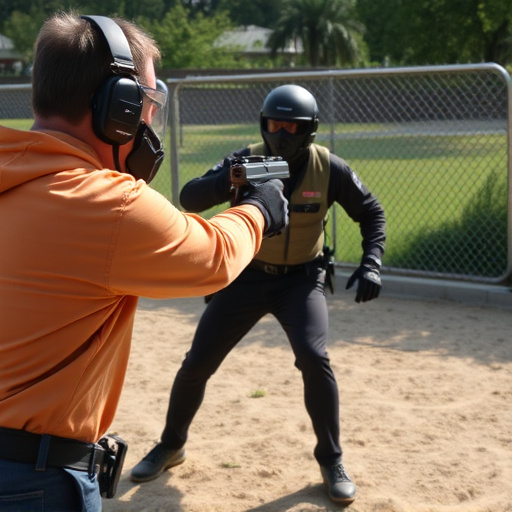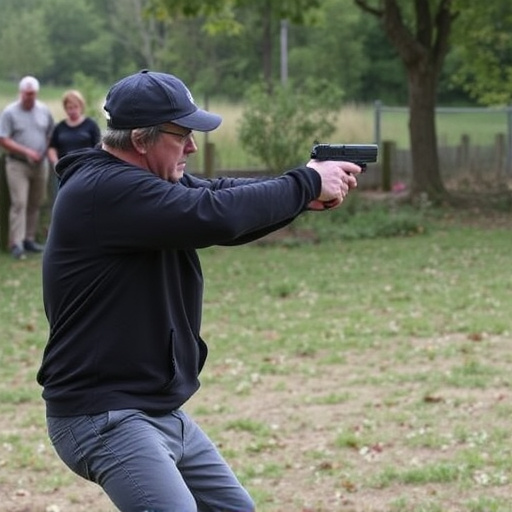In an era where personal security is paramount, especially for runners, concealed compact stun gun detection has become crucial. While traditional metal detectors are limited, advanced technologies like thermal imaging and biometric scanning offer more accurate solutions. These innovations aim to address the challenges posed by discreet, powerful stun guns designed for runners' safety, providing them with much-needed peace of mind while integrating seamlessly into their fitness gear. Future developments in imaging techniques and portable sensors promise even better real-time alerts for enhanced security at high-risk environments like marathons.
- Understanding Concealed Stun Gun Detection: The Current Landscape
- Challenges in Developing Effective Detection Methods
- Compact Stun Guns: A Runner's Perspective on Safety and Discretion
- Potential Solutions and Future Technologies for Stun Gun Detection
Understanding Concealed Stun Gun Detection: The Current Landscape

In today’s world, where personal safety is a growing concern, concealed stun gun detection has emerged as a critical issue, especially for individuals who prioritize their well-being while engaging in activities like running. The current landscape of stun gun detection technology presents a mix of advanced and emerging methods, each with its own set of capabilities and limitations. Traditional metal detectors have long been the go-to option for identifying concealed weapons, but they often struggle to differentiate between various types of objects and may not accurately detect smaller, compact stun guns designed specifically for personal safety.
This is where innovative solutions come into play. Modern technologies like advanced metal detectors with enhanced sensitivity and specific frequency settings can improve detection accuracy. Additionally, some devices employ thermal imaging or biometric scanning techniques to identify heat signatures associated with stun guns, further widening the net for potential threats. For runners and outdoor enthusiasts, a compact stun gun designed for safety offers a discreet yet powerful deterrent, complementing their fitness gear and providing peace of mind during their activities.
Challenges in Developing Effective Detection Methods

The development of effective detection methods for concealed stun guns presents a unique set of challenges, especially considering the diverse range of designs and sizes on the market, including compact stun guns tailored for runners’ safety. One of the primary hurdles is the varying power outputs and frequencies emitted by these devices, which can be hard to standardise and detect consistently. Stun guns operate on different electrical current levels and pulse widths, making it difficult for a single detection technology to cater to all models.
Furthermore, the physical attributes of stun guns, such as their ability to be disguised as everyday objects or integrated into clothing, add another layer of complexity. Traditional metal detectors may not be effective against hidden devices designed to avoid detection, and specialized equipment is often costly and less accessible. As technology advances, researchers must also address the issue of false positives and negatives, ensuring that detection methods can accurately identify stun guns while minimising alerts from non-threatening items, thus preserving privacy and safety for law-abiding citizens.
Compact Stun Guns: A Runner's Perspective on Safety and Discretion

For runners, personal safety is a top concern, especially during early morning or evening training sessions. In recent years, this need for discretion has led to an increase in demand for compact stun guns designed specifically to fit into running gear. These tiny devices pack a powerful punch, offering runners a sense of security while on the go. Their sleek and lightweight designs make them easy to carry without drawing unwanted attention, allowing runners to focus on their training.
The convenience of a compact stun gun for runners goes beyond just its size. It’s a subtle yet effective deterrent, providing peace of mind in potentially risky situations. With proper training, runners can learn how to discreetly deploy the stun gun if needed, ensuring they have a means of self-defense while maintaining their mobility and safety on the roads or trails.
Potential Solutions and Future Technologies for Stun Gun Detection

Potential solutions and future technologies aim to address the growing concern of concealed stun gun detection, especially in high-risk environments. One innovative approach involves advanced imaging techniques, such as thermal scanning and 3D body imaging, which can help identify unusual contours or heat signatures indicative of hidden weapons. These non-intrusive methods are particularly useful for security personnel at events like marathons or other public gatherings where runners may carry compact stun guns for personal safety.
Additionally, the development of more sophisticated metal detectors could play a pivotal role in detecting smaller and less conventional stun guns. Future technologies might include portable, lightweight sensors that can be integrated into clothing or accessories, providing real-time alerts without compromising comfort or mobility. Such advancements are crucial to ensuring the safety of runners and other individuals who may need to defend themselves in unpredictable situations.
The pursuit of concealed stun gun detection highlights the delicate balance between public safety and individual privacy. As technology evolves, especially in the realm of compact stun guns designed for runners’ safety and discretion, it’s crucial to navigate challenges in development while ensuring effectiveness without infringing on personal liberties. Future solutions will likely hinge on advanced materials, innovative sensor technologies, and a deep understanding of the intricate interplay between security and secrecy.
